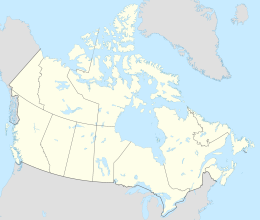| Geography | |
|---|---|
| Location | Frobisher Bay |
| Coordinates | 63°19′N67°27′W / 63.317°N 67.450°W |
| Archipelago | Arctic Archipelago |
| Area | 11 km2 (4.2 sq mi) |
| Coastline | 23 km (14.3 mi) |
| Administration | |
Canada | |
| Territory | Nunavut |
| Region | Qikiqtaaluk |
| Demographics | |
| Population | Uninhabited |
| Source: Bruce Island at the Atlas of Canada | |
Bruce Island [1] is a Baffin Island offshore island located in the Arctic Archipelago in the territory of Nunavut. The island lies in Frobisher Bay, south of Ward Inlet.
Becher Peninsula is to the northwest, while Hall Peninsula is to the east. Islands in the immediate vicinity include: Field Island and Chase Island to the southeast; Fletcher, Pike, and Pugh Islands to the west.

